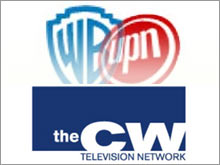New CW network: who wins, who loses
Cable could benefit from merged WB and UPN while some local affiliates get left out in the cold.
NEW YORK (CNNMoney.com) � Who will be the big winner from the creation of the new CW television network? Here's a hint. It might not be CW or even the other major TV networks. Media buyers said cable could wind up gaining more viewers once the CW, created from the merger of CBS (Research)-owned UPN and Time Warner (Research)-owned WB, begins broadcasting in the fall of this year. (Time Warner also owns CNNMoney.com)
Sure, the WB and UPN will have the luxury of cherry-picking the best-rated shows from their current lineups, stuff like the WB's "Smallville" and "Gilmore Girls" and UPN's "Everybody Hates Chris" and the World Wrestling Entertainment's "Smackdown" when looking to create a prime-time lineup for the CW's launch in September. But there won't be room for all of the shows on both networks, which could alienate some TV watchers. "Hopefully, the ratings will go up. But this might drive some viewers to other options like cable or video on demand," said Lyle Schwartz, an analyst with Mediaedge:cia, a media buying firm based in New York. "People who were watching programming on the old networks may go elsewhere." John Rash, senior vice president and director of broadcast negotiations with Campbell Mithun, a Minneapolis-based ad agency owned by Interpublic Group, agreed. "In the case of this merger, the sum will be greater than the individual parts. But it will limit options for audiences and advertisers," he said. "More viewers could migrate to cable." Some shows that get dropped by the UPN or WB stand a chance of getting picked up by cable as long as the price is right, said Shari Anne Brill, vice president of programming with Carat USA, another media buying firm. "More original programming would be great if it's affordable," she said. Experts also wondered if the CW will be able to do a significantly better job of competing with the top four networks � CBS, ABC, FOX and NBC. "This is not a new network. It's a merged network," said Brad Adgate, senior vice president of corporate research for Horizon Media, a marketing firm. "If you look at the CW, there a lot of similarities and it's very competitive out there. You'll have a stronger fifth network but the impact will probably be minimal. I don't think ratings will increase that much," he added. As for the impact on the big four networks -- CBS, ABC, FOX and NBC � the elimination of one competitor should, in theory, make their own prime-time shows more attractive vehicles for advertisers. But some say that the merger actually won't have that much of an effect on ad rates for the big four because the WB and UPN have tended to target a much smaller market of teens and young adults while the major networks typically go after young adults as well as more affluent middle-aged viewers, the coveted 18-49 year-old demographic. "The WB was attractive to advertisers for different reasons, reaching a younger audience. The same thing with UPN," said Brill. "These networks were viewed differently so I don't think the merger will have much of an impact on ad rates." According to data from Nielsen Media Research, both networks have seen their ratings improve this season, particularly with younger viewers. But their combined ratings would still lag the other major networks. What's more, even though ratings for the WB have increased this year, that follows a sharp decline in viewers in 2003 and flat growth last year. There are some clear losers to the merger, however. In markets where both the UPN and WB are available, one of those affiliate stations will be suddenly faced with a big programming void to fill come September. This could hurt companies ranging from media titans like News Corp (Research)., which in addition to owning Fox also owns some local UPN stations, to smaller independent station owners such as Sinclair Broadcasting (Research). The CW, which will be co-owned 50/50 by CBS and Time Warner, will air on the 16 WB affiliates owned by newspaper firm Tribune (Research), 12 CBS-owned UPN stations and a mix of other current UPN and WB affiliates throughout the rest of the country. Schwartz said he doubts that another major media company would try and launch a sixth network to fill the programming gap, which means that many local affiliates will have to come up with content on their own. "It's very hard to build a network. I expect affiliates to look at developing local programming. Syndication is also a viable alternative," he said. And Rash predicted a return to what many affiliates did before the WB and UPN were launched in 1995: host a hodge-podge of various different types of programming. "This could recreate the classic independent television station that runs everything from Jerry Springer in the daytime to John Wayne movies in prime time," Rash said. For more about the new CW network, click here. For more about the game of media musical chairs, click here.
The reporter of this story owns shares of Time Warner through his company's 401(k) plan. |
| |||||||||||||||||||||||||||||||||||||||||||||||||||||||||||


